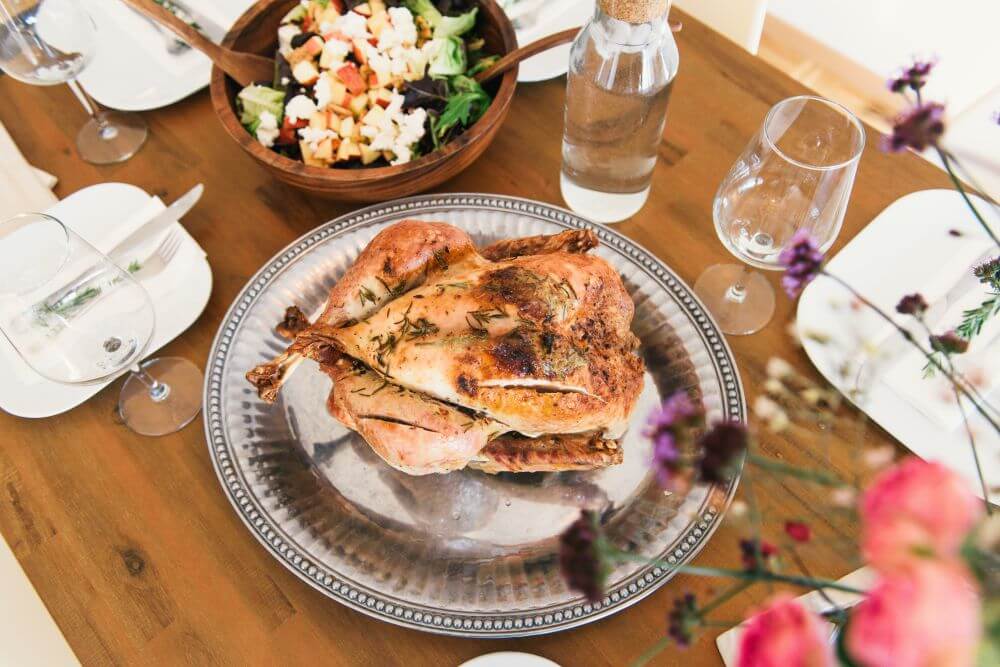Make your chicken go further

Chicken is one of New Zealand’s most thrown-away foods: we’re throwing away 3,403 tonnes of the stuff each year. That’s more than $40 million-worth of meat!
Luckily there are heaps of easy ways to get the most out of your chicken and to reduce the amount of food — and money — you’re throwing away.
Store it properly
Chicken should always be stored in the fridge (make sure your fridge temperature is between 1° and 4°C) —so don’t leave your food shopping in the car, and unpack it as soon as you get home. If you’re not planning to eat your chicken before the use by date, put it in the freezer. You can freeze the chicken any time before that date comes around.
Cook it right
Nobody likes dry, over-cooked chicken. Keep your chicken super-moist by cooking it whole in a slow cooker, or if you’re using an oven, in an oven bag or covered dish. Enclosing the chicken helps to stop all the cooking juices from evaporating—if you don’t make a gravy with them, you can add them to your stock.
Strip your chicken
It sounds a bit rude but it’s the best way to make sure you don’t miss out on any delicious chicken.
Once you’ve had your first meal, take your cooled chicken frame and—with very clean hands—tear all the chicken from the bones. Don’t forget the legs, wings, and the little tenderloin/oyster things on the chicken’s back. Don’t throw away the bones and carcass as you can use them to make stock.

You’ll often find that you have lots more meat than you thought, enough for a meal like Mexican Chicken Rolls or an Open Chicken Lasagne. You can use smaller amounts in sandwiches or on a pizza.
Make a stock
The Victorian kitchen has given scrap-based stocks a bad wrap, but the theory is sound (and the practice delicious!). Take your saved juices, your stripped chicken frame, and grab a bayleaf, a few peppercorns, a pinch of salt and some parsley stalks (if you have them).
Add a handful of vege scraps. Onion, celery and carrot off-cuts are best, but you can also add tiny inner-cloves of garlic, bottoms of spring onions and parsnip trimmings. Be aware that anything from the brassica family—kale ribs, broccoli stalks, cabbage leaves and the like—may make your stock taste a bit like cabbage.
Place everything in a slow cooker or pot, and add water—just enough to cover the chicken. If you’re making your stock in a slow cooker, switch the cooker on to high and cook for 4 hours. If you’re making your stock on the stove, bring the pot to the boil and then barely simmer for one and a half hours.

When the stock has cooled, strain the stock through a sieve or clean cloth. The cooked stock vegetables can be blended into a soup or added to your compost or worm farm. Find out what to do with your cooked bones and meat scraps below.
Use your stock as the base for a soup or a rice dish like risotto, or as the cooking liquid for a grain like quinoa—it will keep in the fridge for four days. You can also freeze the stock in cubes or ziplock bags and then use as a flavour boost for your next pasta sauce or bean casserole.
What to do with the bones?
Chicken bones are non-avoidable food waste. However you can put them in your bokashi system and small chicken bones and scraps can go in your under sink waste disposal system (Insinkerator). If you have a standard composting bin or worm farm, you won’t want to add meat scraps or bones because they can attract rats and mice.

Blog by Sarah Jane Miller, an Auckland-based writer and editor who is passionate about reducing food waste.